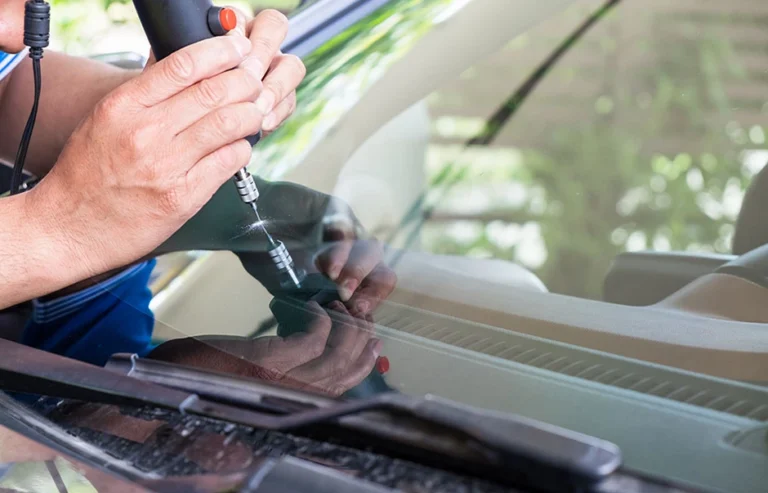When it comes to maintaining industrial equipment, ensuring compliance and safety is paramount. ASME repairs are crucial for preserving the integrity and performance of pressure vessels, boilers, and other critical components. In this ultimate guide, we’ll dive into the essentials of ASME repairs, explore how vacuum pump systems and vacuum system installations fit into the equation, and understand the importance of helium leak detection in maintaining high standards.
What Are ASME Repairs?
ASME repairs refer to the maintenance and modification work carried out on pressure vessels and other components according to the standards set by the American Society of Mechanical Engineers (ASME). These repairs ensure that the equipment continues to operate safely and efficiently, adhering to the stringent guidelines established by ASME.
Key Aspects of ASME Repairs:
• Compliance: Repairs must meet ASME codes to ensure they are safe and effective.
• Certification: Certified repair procedures and personnel are essential to maintain compliance.
• Documentation: Accurate records of repairs are crucial for inspections and audits.
Why ASME Repairs Are Critical for Industrial Equipment
ASME repairs are not just about fixing equipment—they’re about ensuring that it remains safe and compliant with industry standards. Here’s why they matter:
1. Ensuring Safety
• Preventing Failures: Regular repairs help prevent catastrophic failures that could endanger personnel and operations.
• Adhering to Codes: Compliance with ASME codes minimizes risks and enhances overall safety.
2. Maintaining Efficiency
• Optimal Performance: Well-maintained equipment operates more efficiently, reducing downtime and maintenance costs.
• Longevity: Regular repairs extend the lifespan of equipment, offering better returns on investment.
3. Regulatory Compliance
• Legal Requirements: Many industries are required by law to adhere to ASME standards.
• Insurance: Compliance with ASME codes can affect insurance coverage and claims.
Integrating Vacuum Pump Systems into ASME Repairs
Vacuum pump systems play a critical role in many industrial applications, including those involving pressure vessels and high-vacuum environments. Here’s how they tie into ASME repairs:
1. Understanding Vacuum Pump Systems
• Purpose: Vacuum pump systems create and maintain a vacuum environment, crucial for processes like distillation and coating.
• Types: High vacuum pumps and other vacuum systems are designed to handle different levels of pressure and vacuum requirements.
2. Maintenance and Repairs
• Regular Servicing: Just like pressure vessels, vacuum pump systems need regular maintenance to ensure they operate effectively.
• ASME Compliance: Repairs and maintenance must meet ASME standards to ensure system safety and performance.
The Role of High Vacuum Pumps
High vacuum pumps are essential in applications requiring extremely low pressure environments. They are often used in scientific research, semiconductor manufacturing, and other high-tech industries.
1. Types of High Vacuum Pumps
• Turbomolecular Pumps: Ideal for achieving ultra-high vacuum levels.
• Diffusion Pumps: Used for high-vacuum applications where continuous operation is necessary.
2. Maintenance Tips
• Regular Checks: High vacuum pumps require frequent inspections and maintenance to prevent failures.
• Performance Monitoring: Keeping track of pump performance helps identify issues before they become serious problems.
Helium Leak Detection: A Critical Component of ASME Repairs
Helium leak detection is a crucial process in ensuring the integrity of vacuum systems and pressure vessels. Helium, being a small and light molecule, is an ideal tracer for detecting leaks in systems where precision is critical.
1. Why Helium?
• High Sensitivity: Helium leak detection systems can identify even the smallest leaks, ensuring the system’s integrity.
• Accuracy: Helium’s low molecular weight allows for precise detection in high-vacuum environments.
2. Detection Methods
• Mass Spectrometry: Uses helium as a tracer gas to identify leaks.
• Sniffing Technique: A handheld detector is used to sense helium in the vicinity of the suspected leak.
Best Practices for ASME Repairs and Maintenance
To ensure effective ASME repairs and maintain compliance, follow these best practices:
1. Hire Certified Professionals
• Qualified Technicians: Ensure that repairs are carried out by ASME-certified professionals who have the necessary skills and experience.
• Regular Training: Keep repair personnel updated with the latest ASME standards and practices.
2. Adhere to Standard Procedures
• Document Everything: Maintain detailed records of all repairs and maintenance activities.
• Follow Protocols: Stick to ASME guidelines to ensure all repairs meet the required standards.
3. Perform Regular Inspections
• Scheduled Checks: Implement a routine inspection schedule to catch potential issues early.
• Use Advanced Tools: Employ tools like helium leak detectors to ensure system integrity.
Conclusion
ASME repairs are essential for maintaining the safety, efficiency, and compliance of industrial equipment. By integrating vacuum pump systems, understanding the role of high vacuum pumps, and utilizing helium leak detection, you can ensure that your equipment operates at peak performance. Regular maintenance and adherence to ASME standards not only protect your investment but also safeguard the safety of your operations. Following best practices in ASME repairs will help you achieve reliable, long-lasting results and maintain a secure industrial environment.






+ There are no comments
Add yours